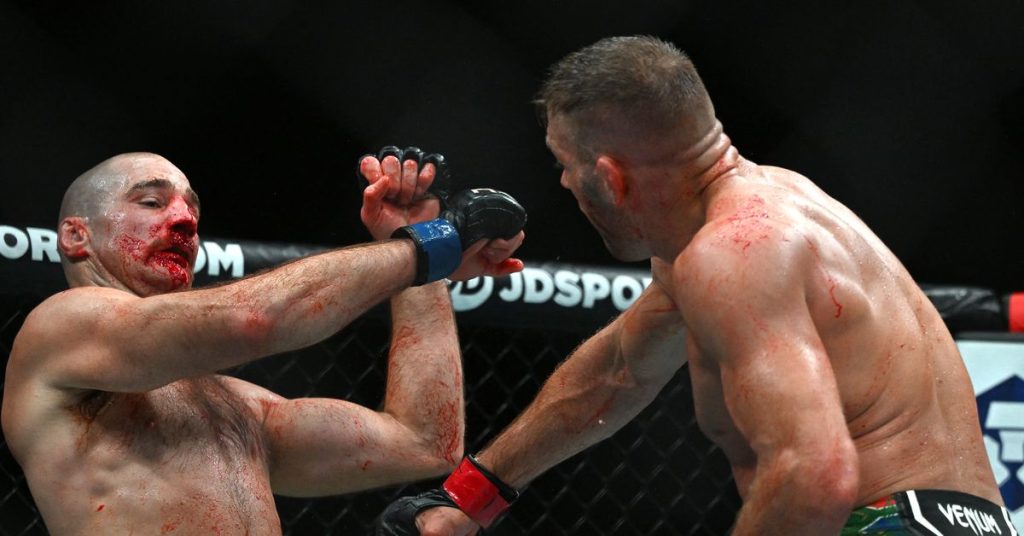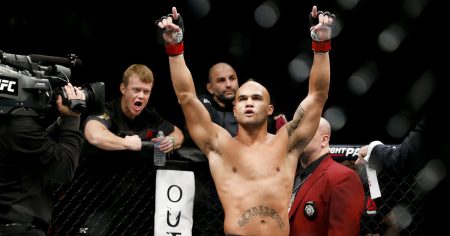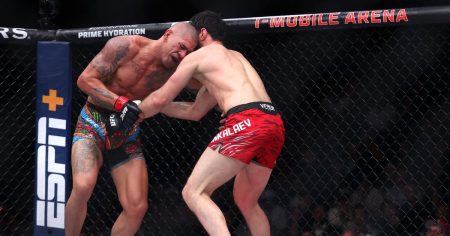The Hype and Reality of Sean Strickland’s Rematch
Sean Strickland came into his rematch against Dricus du Plessis at UFC 312 with a lot of promises. He vowed to fight to the death, to bring a war to Sydney, and to leave no doubts after losing their first encounter by a split decision. However, the outcome was far from what he had predicted, as he lost in an even more lopsided manner this time around. Instead of changing his approach, Strickland absorbed more damage, leading to a lot of criticism post-fight.
The Backlash and Criticism
Following the fight, Strickland faced a barrage of criticism, with UFC analyst Din Thomas famously claiming, "Sean Strickland is not who he says he is" and "he’s not the guy who’s going to go to the death" when he fights. These statements resonated with fans who felt let down by Strickland’s performance. The criticism was harsh, and many fans were disappointed that Strickland did not deliver on his pre-fight promises.
Matt Brown’s Perspective
Retired UFC welterweight Matt Brown, however, offered a different perspective. He questioned the validity of the criticism, suggesting that people might be forgetting who Strickland is as a fighter. Brown argued that Strickland has always fought in a specific style, one that has brought him success and recognition. "What I want to know is when did we start listening to what fighters say? Particularly what Sean Strickland says?" Brown said on the latest episode of The Fighter vs. The Writer.
The Reality of Fighter Promotions
Brown emphasized that while Strickland’s pre-fight rhetoric might be exciting and draw in fans, it doesn’t necessarily reflect his actual fighting style. "He’s an obvious good fighter, an elite fighter. What he has done has got him to where he’s at. Why would you suddenly change it up and why would we expect him to suddenly change that up in the fifth round or fourth or whatever? This is what he does. This is who he is." Brown’s point is clear: Strickland’s strategy and style are consistent, and there’s no reason to expect a drastic change just because of pre-fight hype.
The Role of UFC Marketing
Brown also highlighted the role of UFC marketing in shaping perceptions of fighters. "We know what he’s going to do when he goes in there and fights. It’s a safe style and it’s a good style to win fights on decisions. Again, this is what the UFC has done — I’ve talked about this many times — what they have done better than any sport in history is they have magnified the personalities of those competing. We totally buy into this and we love it. That’s what the UFC markets." The UFC’s marketing strategy has effectively turned fighters into larger-than-life figures, and fans often buy into the drama and hype without considering the realities of their fighting styles.
The Expectation vs. Reality Dilemma
Ultimately, Brown doesn’t fault Strickland for making bold claims before his fights. He argues that fighters need to hype up their matches to generate interest, and it’s a necessary part of the sport’s entertainment value. "What’s he supposed to say? Do you expect him to hype up the fight by saying, ‘Yeah, I’m going to go in and jab him for five rounds, everybody tune in!’ No, he’s trying to hype the fight and get everybody interested and it works." Brown’s stance is that fans and analysts need to separate the promotional rhetoric from the actual performance in the octagon. Strickland, like many fighters, might believe in his own hype, but the reality of the fight often follows a well-established pattern.
Conclusion
The disappointment surrounding Sean Strickland’s performance at UFC 312 underscores the tension between the hype and reality in combat sports. While Strickland’s pre-fight promises might have raised expectations, his consistent fighting style and the UFC’s marketing tactics played a significant role in shaping those expectations. Matt Brown’s insights remind us that fighters are often more predictable in their approach than their words might suggest, and it’s essential for fans and analysts to recognize the difference between promotional bluster and actual performance.











